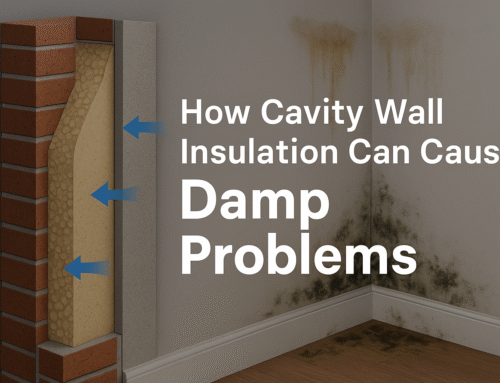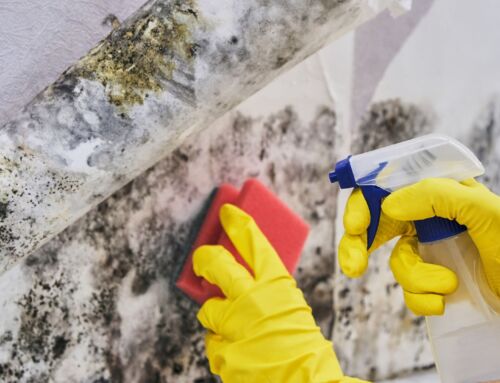Rising damp occurs when groundwater moves up through the walls of a building due to capillary action. Key causes include inadequate damp proof course (DPC), where a missing or damaged DPC allows moisture to rise through walls. High ground levels, where ground outside the building is higher than the internal floor, can bridge the DPC and lead to damp. Blocked drains, which lead to poor drainage around the foundation, can also contribute to rising damp. Faulty construction, such as incorrectly installed or missing DPCs, can cause moisture problems. Additionally, porous materials that absorb water easily can worsen rising damp issues. Climate conditions with high groundwater levels and frequent rainfall increase the risk of rising damp.
What Causes Rising Damp in Walls?
Rising damp in walls occurs when moisture from the ground rises through porous building materials like bricks and mortar via capillary action. This typically happens when there is no effective damp proof course (DPC) or if it is damaged, allowing groundwater to penetrate the walls. High external ground levels can also cause moisture to bypass the DPC, while poor drainage around the building can lead to water pooling near the foundation, increasing the risk. Additionally, porous building materials absorb moisture more easily, and climates with high groundwater levels or frequent rainfall further exacerbate the problem. Addressing rising damp involves improving drainage, repairing or installing a DPC, and treating the affected walls.
What is Capillary Action?
Capillary action refers to the ability of water to move upward through narrow spaces or porous materials, like bricks or mortar, defying gravity. In the context of rising damp, capillary action is the process that causes moisture from the ground to rise through the walls of a building. When there is no proper damp proof course (DPC) or if the DPC is damaged, groundwater is drawn up through tiny pores in the walls via capillary action. The moisture continues to rise until it evaporates, but as it does, it can cause damage to plaster, paint, and the structure itself. Capillary action is the core mechanism behind rising damp, allowing water to move upward into areas that should remain dry.
How Does Rising Damp Occur?
Rising damp occurs when moisture from the ground travels upward through porous materials like bricks or stone in a building’s walls due to capillary action. This happens when there’s no effective damp proof course (DPC), or if the DPC is damaged, allowing groundwater to move into the walls. The porous nature of building materials allows water to be absorbed and rise, especially if the external ground level is high or drainage around the foundation is poor. As the moisture rises, it brings salts that can damage plaster and paint, causing visible deterioration inside the building.
What Happens If Rising Damp Is Left Untreated?
If rising damp is left untreated, it can cause serious structural damage by weakening walls, crumbling plaster, and eroding bricks and mortar. The damp environment can lead to mold growth, posing health risks such as respiratory problems and allergies. It also causes visible aesthetic damage, like stains, peeling paint, and salt deposits on walls. Additionally, damp walls lose heat faster, resulting in higher heating costs. Over time, the problem worsens, leading to more costly repairs and long-term damage to the building.
How Do You Treat Rising Damp?
Treating rising damp involves several steps. First, the most effective solution is to install or repair a damp proof course (DPC), which acts as a barrier to prevent moisture from rising through the walls. Chemical DPC injections are commonly used to create a waterproof layer. Improving drainage around the building is also crucial to prevent water from accumulating near the foundation. Lowering external ground levels can stop moisture from bypassing the DPC. Damaged plaster should be removed and replaced with a damp-resistant plaster to protect against future moisture issues. Finally, using dehumidifiers and ensuring good ventilation will help dry out the affected areas and reduce moisture levels in the air. Proper treatment stops rising damp and prevents further structural damage.
If you’re experiencing issues with rising damp, we’re here to help! Get in touch to arrange your Free survey today!





